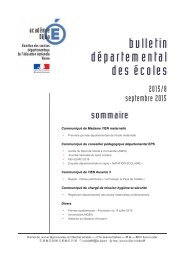agrl_innovations_in_ssa.pdf?utm_content=buffercb41d&utm_medium=social&utm_source=twitter
agrl_innovations_in_ssa.pdf?utm_content=buffercb41d&utm_medium=social&utm_source=twitter
agrl_innovations_in_ssa.pdf?utm_content=buffercb41d&utm_medium=social&utm_source=twitter
Create successful ePaper yourself
Turn your PDF publications into a flip-book with our unique Google optimized e-Paper software.
human foods, future expansion will require further ventures <strong>in</strong>to convenience foods, livestock<br />
feeds and <strong>in</strong>dustrial products.<br />
This will require ongo<strong>in</strong>g support for: build<strong>in</strong>g the capacity of local fabricators, improv<strong>in</strong>g access<br />
to capital for vulnerable groups, improv<strong>in</strong>g access to <strong>in</strong>puts, reduc<strong>in</strong>g high production costs<br />
(particularly of labour due to limited mechanisation), ensur<strong>in</strong>g the susta<strong>in</strong>ed profitability of<br />
process<strong>in</strong>g centres, and <strong>in</strong>frastructure improvement. Unfortunately the production capacity of<br />
ca<strong>ssa</strong>va farmers has not always been sufficient to meet the demand from ca<strong>ssa</strong>va processors,<br />
who consequently face seasonal supply constra<strong>in</strong>ts and operate below capacity.<br />
Lessons learned. The public sector played two important roles, firstly by <strong>in</strong>vest<strong>in</strong>g <strong>in</strong> ca<strong>ssa</strong>va<br />
breed<strong>in</strong>g and pest control programmes and secondly by <strong>in</strong>troduc<strong>in</strong>g policy changes to reduce<br />
subsidies favour<strong>in</strong>g cereals. These <strong>in</strong> comb<strong>in</strong>ation triggered rapid booms <strong>in</strong> ca<strong>ssa</strong>va production.<br />
The private sector played a major support<strong>in</strong>g role not only by provid<strong>in</strong>g project f<strong>in</strong>ance but also<br />
by ensur<strong>in</strong>g that early prototype process<strong>in</strong>g technologies have been developed <strong>in</strong>to often smaller,<br />
simpler and commercially viable models. An important lesson is that a market-led, private sectordriven<br />
developmental approach was the driv<strong>in</strong>g force of development <strong>in</strong> the <strong>in</strong>dustry. This was<br />
achieved through support<strong>in</strong>g processors and by l<strong>in</strong>k<strong>in</strong>g smallholder farmers to the market. While<br />
this has led to emergence of large-scale processors <strong>in</strong> Nigeria, a number of challenges rema<strong>in</strong> to<br />
be addressed. For any agricultural <strong>in</strong>novation to thrive and be susta<strong>in</strong>able all components of the<br />
system must be <strong>in</strong>corporated: technological, market, <strong>in</strong>stitutional and <strong>in</strong>frastructural.<br />
Nigeria, rice production <strong>in</strong> Kats<strong>in</strong>a state<br />
This case study concerns an <strong>in</strong>itiative<br />
supported by FARA’s SSA CP PLS <strong>in</strong> KKM <strong>in</strong> the<br />
Dandume Local Government Area (LGA) of<br />
Kats<strong>in</strong>a State, Nigeria. Rice is an <strong>in</strong>creas<strong>in</strong>gly<br />
important crop <strong>in</strong> Nigeria, grown for both sale<br />
and for home consumption. Dandume with its<br />
large lowland (fadama) areas has traditionally<br />
been a rice-grow<strong>in</strong>g area. However low<br />
productivity and poor market<strong>in</strong>g, as <strong>in</strong> other<br />
rice-grow<strong>in</strong>g areas have limited the potential benefits. Br<strong>in</strong>g<strong>in</strong>g together stakeholders<br />
with<strong>in</strong> an IP at LGA level provided the forum for jo<strong>in</strong>t identification of challenges and<br />
opportunities that could be addressed by partners. Introduction and test<strong>in</strong>g of new<br />
rice varieties, management, and storage practices comb<strong>in</strong>ed with improved market<strong>in</strong>g<br />
led to higher productivity and household <strong>in</strong>comes. Initial success on the pilot scheme<br />
based on five villages is already be<strong>in</strong>g scaled out to all villages <strong>in</strong> the LGA. The success<br />
demonstrates the importance of local stakeholders be<strong>in</strong>g able to work together <strong>in</strong><br />
solv<strong>in</strong>g simultaneously production, storage and market<strong>in</strong>g problems while l<strong>in</strong>k<strong>in</strong>g and<br />
build<strong>in</strong>g the capacity of production and market actors.<br />
Context. Rice is an important crop <strong>in</strong> Nigeria produced for both home consumption and sale<br />
and often considered a luxury food item for special occasions (Booz, 2009). There are many<br />
The case studies: West Africa<br />
79






